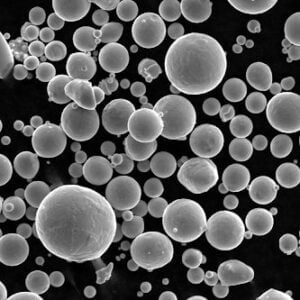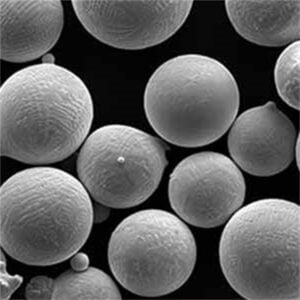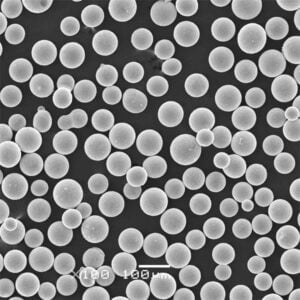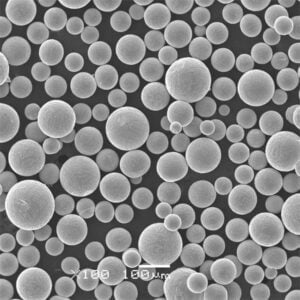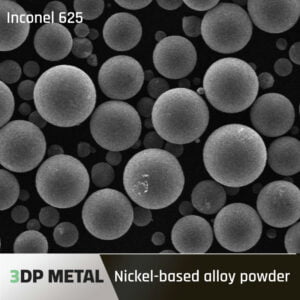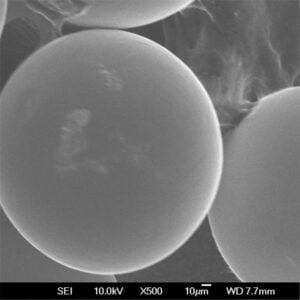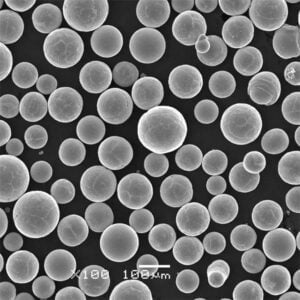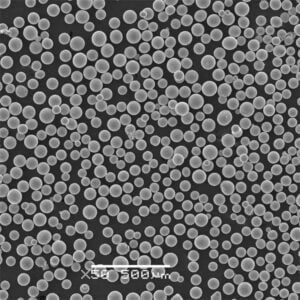Niobový prášek z titanu
Obsah
niob titanový prášek is an advanced intermetallic material with excellent superconducting properties and high strength. This article provides a comprehensive overview of NbTi powder including its composition, production methods, key properties, applications, specifications, pricing, and more.
Overview of niobium titanium powder
NbTi is an intermetallic compound composed of niobium (Nb) and titanium (Ti). It is considered a superconductor material, able to conduct electricity with zero resistance below a critical temperature. NbTi has higher strength compared to pure niobium and enhanced superconducting properties from the titanium additions.
Key properties that make NbTi useful for various high-tech applications are:
- High critical temperature
- High critical magnetic field strength
- Good ductility and workability
- Vynikající pevnost
- Odolnost proti korozi
- Biokompatibilita
NbTi powder can be compacted into various product forms from wire and tape to rods and specialty shapes. Key applications utilize the superconductivity such as for MRI machines, particle accelerators, tokamak fusion reactors, and high field magnets. The combination of strength and conductivity also suits NbTi for advanced medical devices, aerospace components, particle detectors, and energy storage.
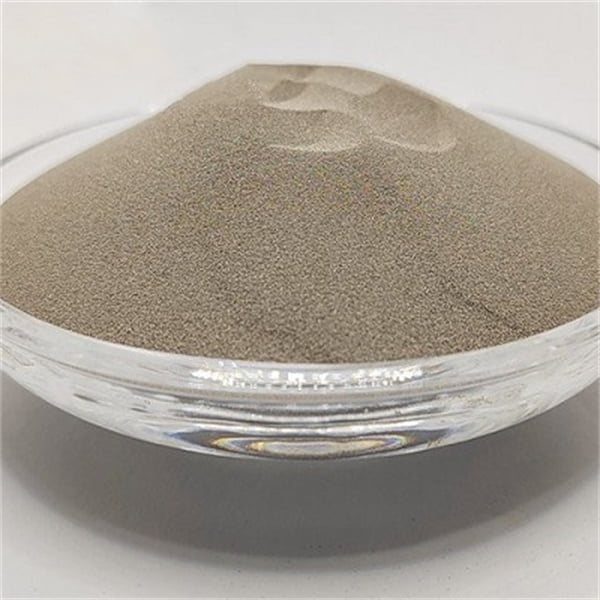
Složení of niobium titanium powder
| Niobium (Nb) Content (wt%) | Titanium (Ti) Content (wt%) | Vlastnosti | Aplikace |
|---|---|---|---|
| 40-50 | 50-60 | * Good balance of strength and ductility * High corrosion resistance * Moderate machinability | * Aerospace components (e.g., turbine blades, landing gear) * Chemical processing equipment * Biomedical implants |
| 50-56 | 44-50 | * High strength * Excellent creep resistance at elevated temperatures * Suitable for additive manufacturing (3D printing) | * Jet engine parts * Heat exchangers * High-performance sporting goods |
| 56-65 | 35-44 | * Very high strength * Superior wear resistance * Limited ductility | * Cutting tools * Wear plates * Military applications |
| 65-75 | 25-35 | * Extreme high-temperature strength * Improved oxidation resistance * Brittle at room temperature | * Refractory crucibles * Rocket engine components * Leading edges of hypersonic vehicles |
Výroba of niobium titanium powder
| Fáze | Popis | Klíčové úvahy |
|---|---|---|
| Raw Material Selection | The foundation for high-quality NbTi powder lies in meticulous selection of starting materials. Niobium and titanium, the primary elements, must be of high purity to minimize impurities in the final product. | – niob: Electron Beam Melted (EBM) niobium or niobium hydride powder are preferred due to their low oxygen content and good flowability. – Titan: Similar to niobium, high-purity titanium sponge or powder obtained through various techniques like Kroll process or hydride-dehydride (HDH) method is used. |
| Příprava prášku | Here, the chosen niobium and titanium are transformed into a uniform powder mixture. There are two main approaches: pre-alloyed and blended elemental powders. | – Pre-alloyed method: This involves directly producing a NbTi alloy through techniques like metallothermic reduction or reactive sintering. It offers good control over composition but can be more complex and expensive. – Blended elemental method: Here, individual niobium and titanium powders are precisely weighed and mixed to achieve the desired final composition. This method is simpler but requires careful control of particle size and distribution for homogenous mixing. |
| Comminution (Grinding) | Regardless of the preparation method, the resulting material (pre-alloyed or blended) might require size reduction to achieve the desired particle size range for NbTi powder. Grinding techniques like ball milling or attritor milling are employed. | – Velikost a distribuce částic: NbTi powder for different applications have specific particle size requirements. For instance, finer powders are suitable for additive manufacturing techniques, while larger particles might be used for traditional methods like wire drawing. – Contamination control: During grinding, contamination from grinding media or lubricants needs to be minimized to maintain powder purity. |
| Classification and Segregation | After grinding, the NbTi powder needs to be classified to achieve a narrow particle size distribution. This ensures consistent properties in the final product. | – Sieving: A traditional method that separates particles based on size using sieves with different mesh openings. However, sieving can be inefficient for submicron powders. – Air classification: This technique utilizes differing settling velocities of particles in an air stream to separate them based on size. It offers better control for finer powders. |
| Vacuum Cleaning and Degassing | Since the presence of oxygen and other gases can negatively impact the superconducting properties of NbTi, these impurities need to be removed. | – Vacuum outgassing: The powder is subjected to high vacuum and elevated temperatures to remove adsorbed gases on the powder surface. – Electron beam melting (EBM) refining: An alternative approach involves melting the NbTi powder in a vacuum using an electron beam. This not only removes gases but also refines the microstructure and improves homogeneity. |
| Consolidation and Finishing | The final stage involves transforming the NbTi powder into a usable form depending on the desired application. | – Powder metallurgy techniques: NbTi powder can be pressed into shapes and sintered at high temperatures to create bulk materials. – Aditivní výroba: Techniques like electron beam melting (EBM) or selective laser melting (SLM) can be used to create complex 3D structures directly from NbTi powder. – Wire drawing: NbTi powder can be consolidated into rods and then drawn into wires for applications like superconducting magnets. |
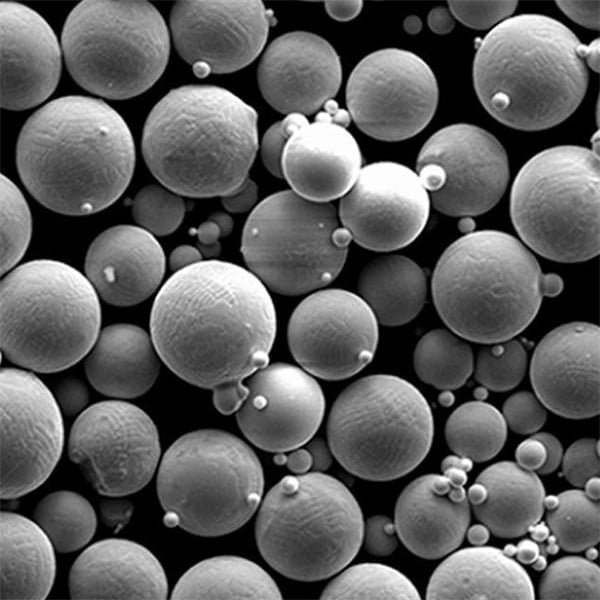
Vlastnosti z niob titanový prášek
| Vlastnictví | Popis | Dopad |
|---|---|---|
| Složení | Niobium titanium (NbTi) powder is a binary alloy, meaning it primarily consists of two elements: niobium (Nb) and titanium (Ti). The specific ratio of these elements can vary depending on the desired properties of the final product. Common compositions include Nb42Ti58 and Nb56Ti44, indicating the weight percentage of each element in the alloy. | The Nb content influences the high-temperature performance and corrosion resistance. Higher Nb content translates to better performance in these areas. Titanium, on the other hand, contributes to strength, hardness, and biocompatibility. |
| Velikost a morfologie částic | Niobium titanium powder is available in a range of particle sizes, typically between 10 and 105 microns. The particle morphology, or shape, is usually spherical. | Particle size plays a crucial role in powder bed fusion additive manufacturing processes, where the powder particles are melted together to form the final object. Smaller particles generally result in finer features and smoother surfaces but can be more challenging to handle due to increased surface area and potential for agglomeration (clumping). Spherical morphology offers good flow characteristics and packing density, essential for consistent material deposition during 3D printing. |
| Hustota | The density of niobium titanium powder typically falls within the range of 6.2 to 6.5 g/cc (grams per cubic centimeter). This value is lower than that of pure niobium (8.57 g/cc) and slightly higher than pure titanium (4.51 g/cc), reflecting the combined contributions of both elements. | Density is a critical factor for several applications. A lower density translates to lighter weight components in aerospace and automotive industries. However, for applications demanding high strength-to-weight ratio, a balance between density and mechanical properties is necessary. |
| Mechanické vlastnosti | Niobium titanium powder exhibits a combination of desirable mechanical properties. Ultimate tensile strength, a measure of the maximum stress a material can withstand before failure, ranges from 500 to 800 MPa (megapascals). Yield strength, the stress at which a material begins to deform plastically, falls between 400 and 600 MPa. The modulus of elasticity, indicative of a material’s stiffness, is typically within the range of 52 to 69 GPa (gigapascals). | These properties make niobium titanium powder suitable for applications requiring good strength and structural integrity. For instance, the high yield strength allows components to resist deformation under load. The adjustable range of properties through composition control enables tailoring the material for specific needs. |
| Tepelné vlastnosti | Niobium, a refractory metal, contributes significantly to the high melting point of niobium titanium powder, typically exceeding 3000°C. This translates to excellent high-temperature performance, making the material suitable for applications exposed to extreme heat. | The high melting point allows niobium titanium components to function reliably in environments with elevated temperatures, such as in jet engines and rocket propulsion systems. |
| Elektrické vlastnosti | Niobium titanium powder exhibits moderate electrical conductivity. While not as conductive as pure copper or aluminum, its conductivity is sufficient for certain electrical applications. | The electrical conductivity can be beneficial for components requiring some level of electrical current flow, such as heat exchangers or components in electronic devices. |
| Odolnost proti korozi | Niobium titanium powder demonstrates good corrosion resistance in various environments, including acidic, alkaline, and saline solutions. This resistance is attributed to the formation of a passive oxide layer on the surface that hinders further corrosion. | The corrosion resistance enables the use of niobium titanium components in applications exposed to harsh environments, such as chemical processing equipment or marine components. |
| Biokompatibilita | The presence of titanium in niobium titanium powder contributes to its biocompatible nature. This property makes the material suitable for use in medical implants, such as artificial bones and joints, where good interaction with the body’s tissues is crucial. | Biocompatibility minimizes the risk of rejection or adverse reactions when implanted in the human body. This characteristic opens doors for the development of advanced medical devices with improved patient outcomes. |
Aplikace of niobium titanium powder
| Průmysl | aplikace | Využití klíčových vlastností | Výhody |
|---|---|---|---|
| Aerospace | * Aircraft structural components (wings, fuselage) * Jet engine components (disks, blades) * Rocket propulsion systems (thrust chambers, nozzles) | * High strength-to-weight ratio * Excellent mechanical strength at elevated temperatures * Superior creep resistance | * Lightweight construction for improved fuel efficiency and increased payload capacity * Enhanced performance in high-stress environments * Extended component lifespan due to resistance to deformation under heat |
| Lékařský | * Orthopedic implants (bone plates, screws, joint replacements) * Surgical instruments | * Biocompatible – minimizes risk of rejection by the body * Outstanding corrosion resistance – reduces risk of infection * Good machinability – allows for creation of complex implant geometries | * Enables long-term implantation for improved patient outcomes * Provides a durable and reliable material for surgical procedures * Facilitates minimally invasive surgery through creation of intricate instruments |
| Energie | * Superconducting magnets for MRI machines and particle accelerators * High-performance electrodes for energy storage devices | * Superconductivity – allows for efficient transmission of electricity with minimal losses * High electrical conductivity – facilitates efficient energy transfer * Good mechanical strength – enables construction of robust magnets | * Enables powerful MRI machines for detailed medical imaging * Supports development of next-generation particle accelerators for scientific research * Contributes to advancements in energy storage solutions for renewable energy integration |
| Chemické zpracování | * Reaction vessels and heat exchangers * Components for handling corrosive chemicals | * Exceptional corrosion resistance – withstands exposure to harsh chemicals * High melting point – maintains structural integrity at elevated temperatures * Good weldability – allows for secure fabrication of complex equipment | * Ensures safe and reliable handling of corrosive materials in chemical plants * Minimizes downtime and maintenance costs due to extended equipment life * Enables efficient heat transfer in challenging chemical processing environments |
| Spotřební elektronika | * High-performance capacitors for portable electronics * Heat sinks for electronic devices | * High electrical conductivity – facilitates efficient energy storage and discharge * Good thermal conductivity – promotes effective heat dissipation * Tailorable properties for specific electronic applications | * Enables development of compact and powerful capacitors for longer battery life in portable devices * Contributes to improved thermal management in electronic components for enhanced performance and reliability * Offers versatility for customization in various consumer electronics applications |
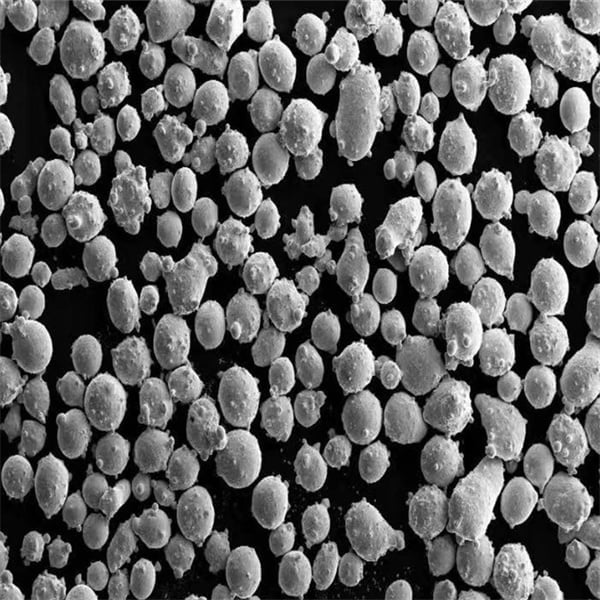
niob titanový prášek Specifikace
| Specifikace | Popis | Jednotky | Typické hodnoty |
|---|---|---|---|
| Složení | Niobium (Nb) and Titanium (Ti) content by weight | wt% | Nb: 40-75% <br> Ti: Balance |
| Balance Elements | wt% | < 0.X% (X denotes specific element like Ta, O, C, N) | |
| Distribuce velikosti částic | Range of particle diameters | μm (microns) | 10-100 (can be customized) |
| Morfologie částic | Shape of the powder particles | – | Sférické |
| Zdánlivá hustota | Density of the powder in its loose, poured state | g/cm³ | 2.5-4.5 |
| Klepněte na položku Hustota | Density of the powder after being tapped to settle any trapped air | g/cm³ | Slightly higher than apparent density (e.g., 3.0-5.0) |
| Tekutost | Snadnost, s jakou prášek teče | sec/50g | Lower values indicate better flow |
| Obsah kyslíku | Amount of oxygen present in the powder | wt% | ≤ 0.X% (dependent on application) |
| Obsah dusíku | Amount of nitrogen present in the powder | wt% | ≤ 0.X% (dependent on application) |
| Obsah uhlíku | Amount of carbon present in the powder | wt% | ≤ 0.X% (dependent on application) |
| Obsah vlhkosti | Amount of water vapor absorbed by the powder | wt% | ≤ 0.X% (typically very low) |
| Laser Sintering Properties | How well the powder interacts with a laser beam during additive manufacturing processes | – | Optimized for good melting, spreading, and densification |
Dodavatelé a ceny
Niobium titanium powder and wire is only produced by a handful of specialist suppliers given the niche high-tech applications and specialized production equipment required.
Leading NbTi Powder Suppliers
- Wah Chang (US)
- Ningxia Orient Tantalum Industry (China)
- HC Starck (Germany)
- Phelly Materials (Netherlands)
Stanovení cen
As a specialty pulverized intermetallic material, niob titanový prášek commands premium pricing relative to common metals. Cost per 100g can range from around $250 to $500+ depending on purity and particle characteristics.
Scrap and recycled NbTi powder is traded at discounts of 40% or more compared to virgin powder price levels.
In alternative forms like wire, a 1 kg spool of superconducting NbTi wire sells for $3,000 to $5,000+ depending on strand count and processing.
Comparisons With Other Materials
Niobium Titanium vs Niobium Tin
Niobium-tin (Nb3Sn) is another common superconductor competing with NbTi depending on the application. Compared to NbTi , Nb3Sn has:
Výhody
- 50% higher critical magnetic field strength
- Ability to retain superconductivity at higher temperatures
Nevýhody
- More complex manufacturing
- More brittle with lower workability
- More expensive (contains expensive tin)
This makes Nb3Sn more suitable to ultra high field magnets that justify the higher cost while NbTi offers the best well-rounded performance for general applications below 12T field strength.
Niobium Titanium vs Niobium Zirconium
Replacing some of the titanium in NbTi alloys with zirconium creates NbZr superconductors with slightly better ductility and workability. Key differences versus standard NbTi grades are:
NbZr Advantages
- Higher ductility – better for complex wire drawing
- Higher workability at low temps
- Less magnetic flux pinning centers
NbTi Advantages
- Lower materials cost
- Higher temperature stability
- Higher critical current density
So NbZr competes again for specialized high-field magnet coils pushing performance boundaries while NbTi offers the better economics and well-proven commercial properties meeting most medical or industrial needs.
Limitations and Risks
| Aspekt | Popis | Strategie zmírňování dopadů |
|---|---|---|
| Náklady | Niobium-titanium powder is an expensive specialty material, with prices exceeding $250 per 100 grams. This significantly impacts production costs and limits widespread adoption to high-value applications like medical equipment and scientific research. | – Research and development into alternative superconductor materials with comparable performance but lower material costs. – Exploring methods for efficient recycling of niobium-titanium scrap to reduce reliance on virgin material. |
| Křehkost | The presence of intermetallic phases within the powder can make it prone to cracking under excessive strain or deformation during processing. This brittleness necessitates careful handling and manufacturing techniques to preserve the material’s ductility, which is crucial for shaping it into functional components. | – Optimizing powder production processes to minimize the formation of brittle intermetallic phases. – Implementing annealing steps at strategic points during manufacturing to restore ductility and prevent cracking. – Tailoring the processing parameters, such as pressure and temperature, to best suit the specific powder characteristics. |
| Citlivost na oxidaci | Niobium-titanium powder readily oxidizes when exposed to temperatures exceeding 400°C. This oxidation degrades the material’s superconducting properties and ultimately hinders its performance. Additionally, exposure to oxidizing acids or environments further accelerates this degradation. | – Implementing rigorous handling procedures in controlled environments to minimize exposure to air and moisture. – Utilizing inert gas atmospheres during processing steps involving high temperatures. – Employing protective coatings on the powder particles to create a barrier against oxidation. |
| Magnetic Field Limitations | Niobium-titanium exhibits a critical field limit, which is the maximum magnetic field strength it can sustain while remaining superconducting. This limit typically falls within the range of 12-15 Tesla. Applications requiring stronger magnetic fields necessitate alternative superconductor materials like niobium-zirconium (NbZr), which boasts a higher critical field but comes at a cost of increased complexity and fabrication challenges. | – For applications requiring fields exceeding NbTi’s limits, exploring the use of NbZr or other high-temperature superconductors (HTS) while acknowledging their unique processing requirements and potential trade-offs in performance. – Optimizing the design of magnets utilizing NbTi to achieve the desired field strength within its operational limits. This may involve innovative coil configurations or incorporating additional structural support elements. |
| Problémy při zpracování | Niobium-titanium powder’s transformation into functional components like wires or tapes involves intricate processes like powder compaction, sintering, and multi-filament wire drawing. Each step requires careful control to achieve the desired microstructure and superconducting properties. Deviations from optimal processing parameters can lead to imperfections, reduced performance, or even material failure. | – Investing in advanced manufacturing equipment with precise control over process parameters like temperature, pressure, and drawing speed. – Implementing rigorous quality control measures at each stage of the processing chain to identify and address potential issues. – Utilizing computational modeling tools to simulate and optimize the processing steps for achieving the desired material properties. |
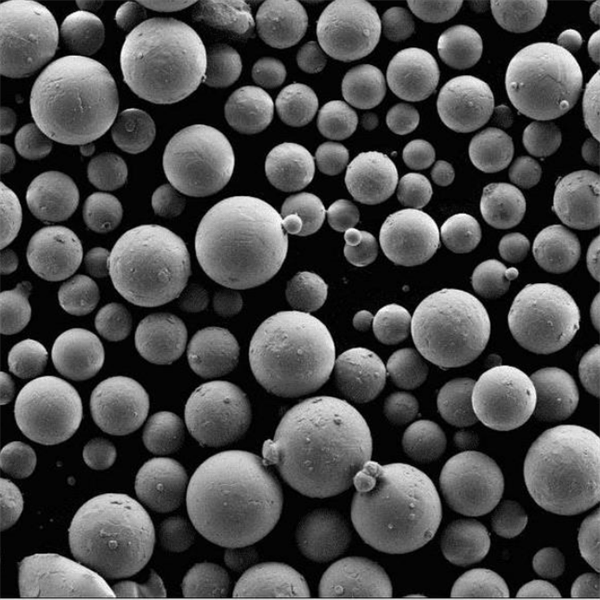
Outlook
Global demand for niobium-titanium is projected to grow steadily at 6-8% annually driven mainly by MRI machine production and upgrades but also from expansion in particle colliders for research.
Growth potential also exists in magnetic separation for mining applications and improvements in high temperature superconductors for next generation compact fusion power if the technology continues to progress to commercial viability.
With high barriers to entry, existing NbTi suppliers are positioned well to benefit from increasing consumption across medical, scientific, and potential future energy sectors. Recycling of scrap NbTi also helps supplement primary powder output.
Nejčastější dotazy
What is niobium titanium powder used for?
- Mainly used for manufacturing superconducting wire and tapes for high-field MRI magnets, particle accelerators, fusion reactors, specialty industrial magnets, etc. Also used for medical implants and devices due to its biocompatibility, strength, and non-magnetic properties.
What are the typical niobium and titanium percentages in NbTi?
- The niobium content by weight ranges from 40-75% with titanium accounting for the balance. Actual compositions vary by application to optimize properties – for example higher Nb for higher temperature stability.
What is the powder production method for NbTi powder?
- Main production routes are gas atomization of induction melted ingots or via hydride-dehydride processing to crush and pulverize scrap/ingots into powder. Both methods produce the necessary small grained microstructure.
What is the critical temperature of NbTi?
- Critical temperature where NbTi transitions to a superconducting state is between 9-10.5K depending on exact composition. This makes it well-suited to liquid helium cooling applications.
What are other common niobium-based superconductors?
- NbTi is most common but niobium-tin (Nb3Sn) offers higher field strength capabilities for specialized magnets. Less common is niobium-zirconium (NbZr) with some ductility advantages but lower overall conductivity than NbTi at near absolute zero temperatures.
Is niobium titanium a type I or type II superconductor?
- NbTi is categorized as a type II superconductor, meaning it exhibits both normal and superconducting states in parallel in an applied magnetic field between its first and second critical field strengths. This gives a high critical current density.
Is NbTi degradation a concern?
- Performance decay from oxidation can be an issue above 400°C. Maintaining a protective inert atmosphere is important during powder processing and wire manufacturing. Insulating NbTi wire in epoxy matrix helps guard against oxidation during service.
Sdílet na
MET3DP Technology Co., LTD je předním poskytovatelem řešení aditivní výroby se sídlem v Qingdao v Číně. Naše společnost se specializuje na zařízení pro 3D tisk a vysoce výkonné kovové prášky pro průmyslové aplikace.
Dotaz k získání nejlepší ceny a přizpůsobeného řešení pro vaše podnikání!
Související články

Vysoce výkonné segmenty lopatek trysek: Revoluce v účinnosti turbín díky 3D tisku z kovu
Přečtěte si více "O Met3DP
Nedávná aktualizace
Náš produkt
KONTAKTUJTE NÁS
Nějaké otázky? Pošlete nám zprávu hned teď! Po obdržení vaší zprávy obsloužíme vaši žádost s celým týmem.

Kovové prášky pro 3D tisk a aditivní výrobu
SPOLEČNOST
PRODUKT
kontaktní informace
- Město Qingdao, Shandong, Čína
- [email protected]
- [email protected]
- +86 19116340731






